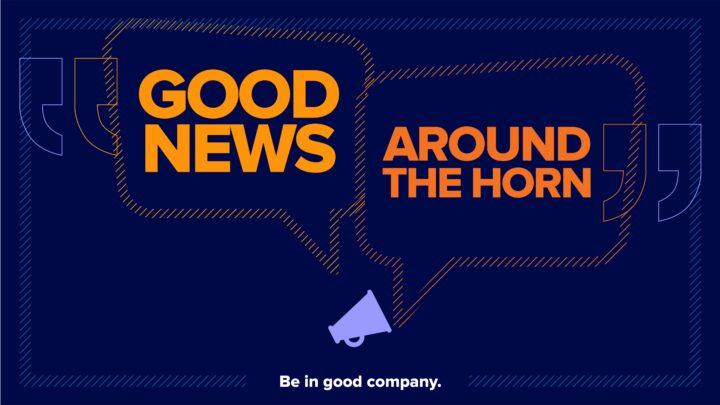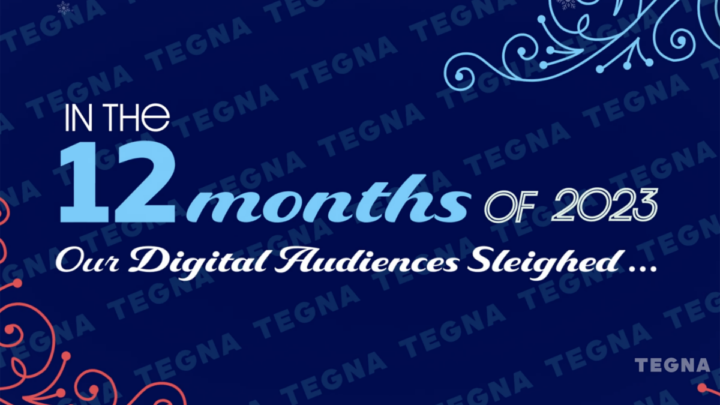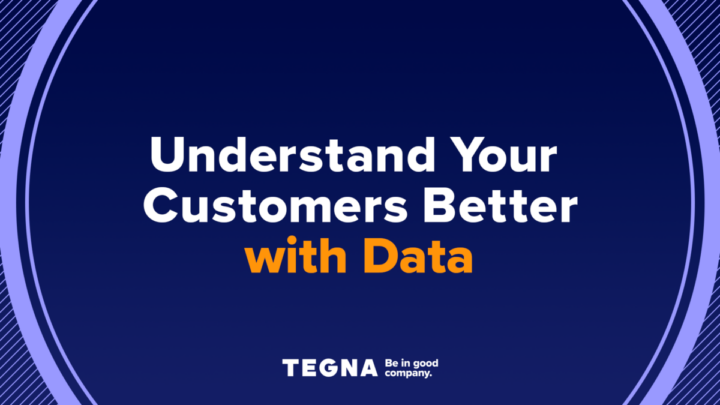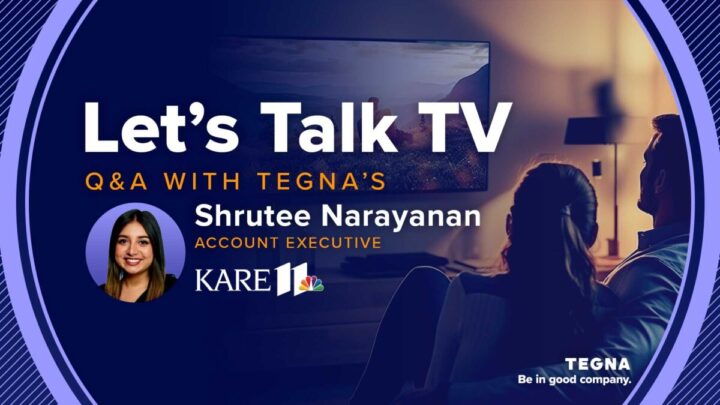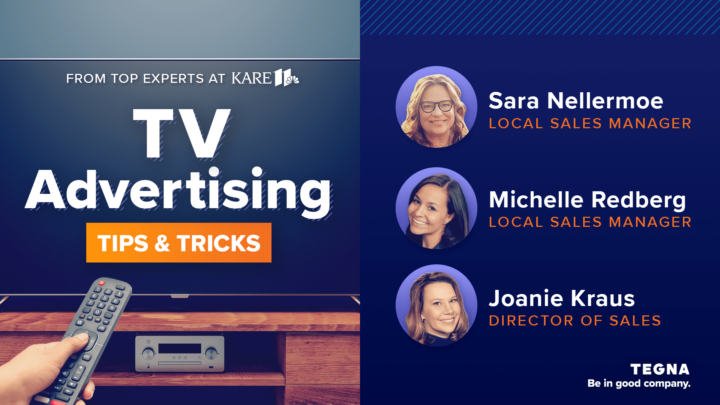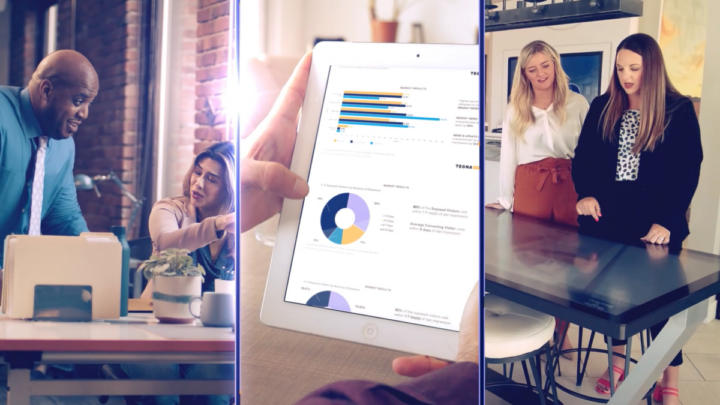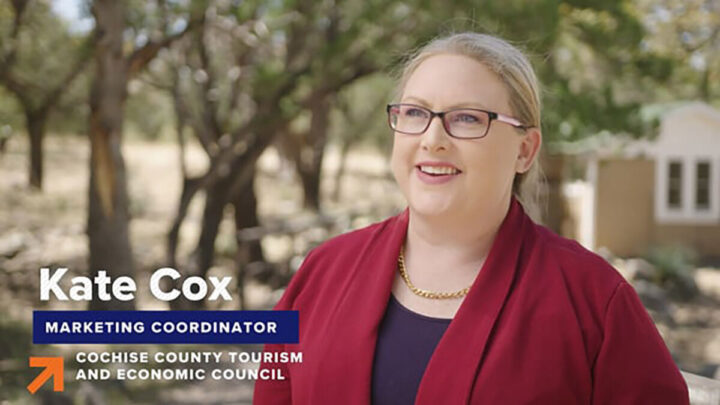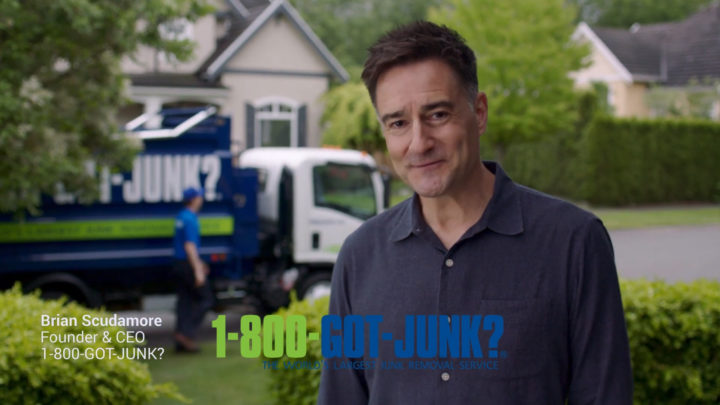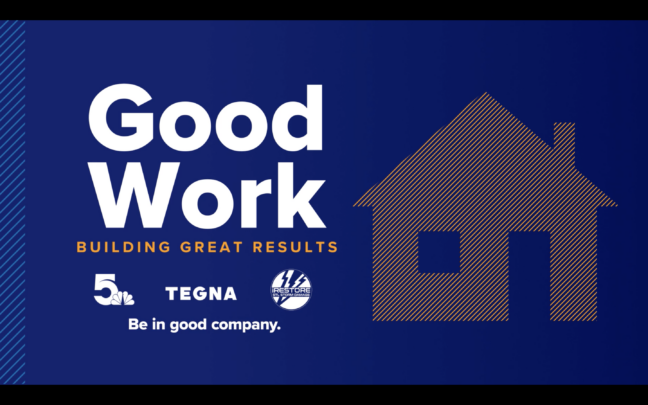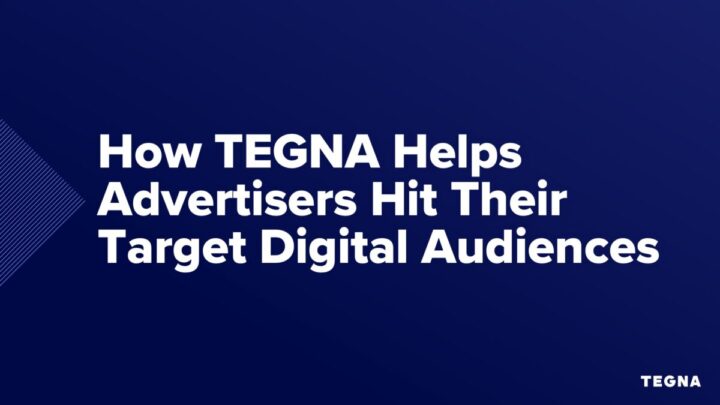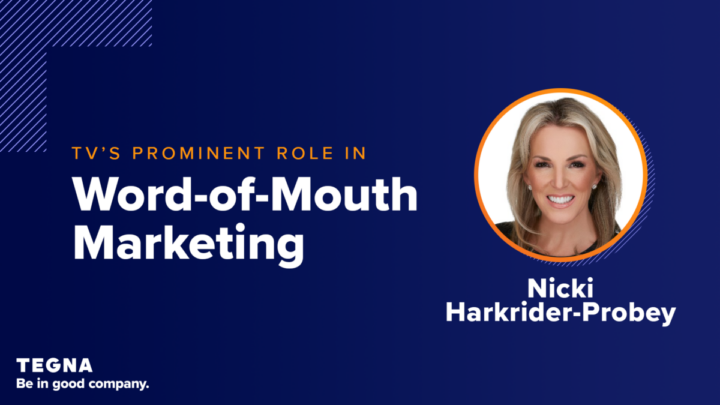8 Tips For Your Online Retail Advertising Strategy
Advertising your retail business online is an essential part of a successful retail marketing campaign. Here are tips for your online retail advertising strategy to get started.
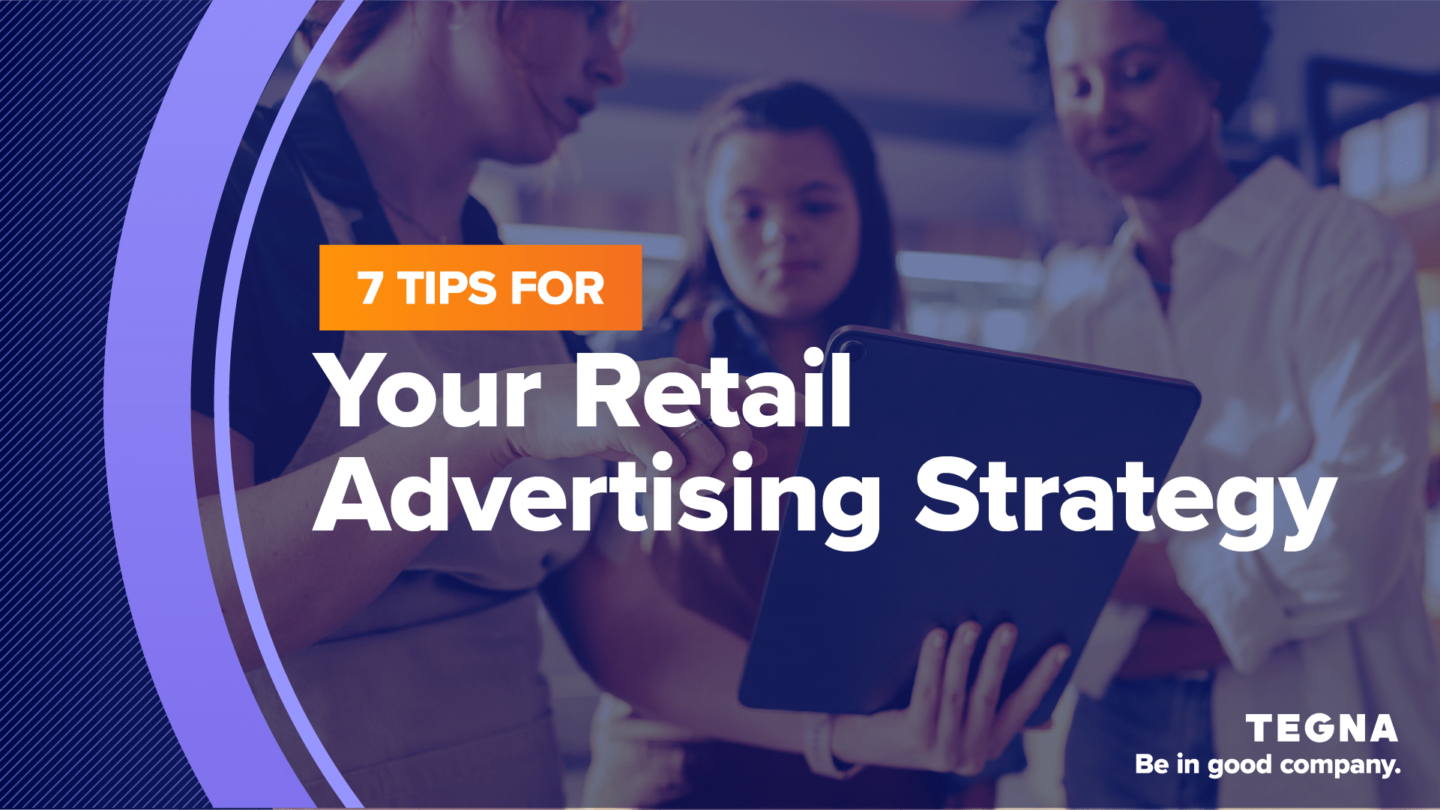
This year, the NRF forecasts retail sales to grow between 4% and 6% to $5.23 trillion. That means that a lot of Americans are ready to spend. But with so many retailers competing for consumer attention – and their dollars – standing out from the crowd can be a major challenge, especially for retail brand marketers.
That makes your advertising strategy key, but where should you start?
Here is our complete guide to marketing and advertising your retail business to become a trusted brand, make meaningful connections, acquire new customers, and grow your business.
What is Online Retail Marketing?
For any business, marketing is the process of amplifying your brand to a target market with advertising in order to generate and grow business.
Sounds simple enough, but before you slap ads together and run them on your favorite platforms, there are a lot of steps you’ll need to take to create an effective strategy.
Step 1: Market & Audience Research
Think about your retail brand. Who buys your products? How does your product fulfill their needs? When and where are they most receptive to advertising? Creating persona profiles is one way to organize all your research to get to know your customers better. Doing so will help inform your marketing campaigns and, in turn, deliver good business outcomes.
Step 2: Developing Creative
Once you understand your customers, their needs, likes, wants, and pain points, developing advertising creative they can connect with is key. But how do you create ads that move the needle? And where do you place them?
Show how your brand can help them solve a problem. Try and create a story that creates emotional connections or uses humor in a way the consumer can relate to. Craft the story your customers want to hear, not the ‘yell & sell’ approach. For more on effective creative, be sure to check out:
- Making TV Ads with TEGNA’s Top Experts
- Q&A: How to Make Strong Creative For TV Ads with Brian Kintz
- How to Create Ads that Convert: 12 Tips
Step 3: Media Planning
Next comes creating a media plan. Media planning involves finding the best channels for reaching your target audience while maximizing ROI. More on that below.
Step 4: Measuring Results & Optimizing
Proving that marketing dollars work has always been a challenge. Thanks to new and emerging technology, a measurement tool such as TEGNA Attribution can collect the data you need to prove the value of paid media, make optimization decisions, and maximize campaign efficiency.
The Retail Advertising Mix: The Power of Video
There are so many ways and channels for brands to reach target audiences that media planning can become quite a task. At TEGNA, we’ve found that nothing tops the power of video. Did you know that video can increase purchase intent by 82%? In fact, 73% of consumers say they are more likely to buy a product or service after watching a branded video. This makes a holistic video strategy critical to ensure your retail brand is top of mind. Better yet, video can be used for a variety of channels, including:
- Broadcast Television: TV is one of the most effective and profitable ways for advertisers to reach local and national audiences. TVB found that 8 in 10 of those exposed to brand advertising on TV experienced ad recall, went online to learn more, followed the brand on social media, contacted the office, or visited the website.
- Streaming TV: Did you know that advertising reaches 90% of in-store shoppers when a strategy combines TV and streaming? The advantages of combining Broadcast TV with streaming include extended reach, advanced targeting, measurable results, and the flexibility to optimize. More on that to come.
- Digital & Online: Digital advertising reinforces ads on Broadcast and Streaming channels. Video can also be used here in the form of Pre-Roll, Display, Native Ads, embedded in emails, and on social media. Additionally, TVB found that 82% of in-store shoppers view the ads when visiting a local TV website/app, such as 12News.com.
What are the Benefits of Cross-Platform Advertising for Retail?
Today, consumer viewing habits are more dispersed than ever. For many advertisers, it comes down to decisions like choosing between broadcast TV, streaming, and digital … but who’s to say that you have to choose one over the other? With a one-platform media strategy, your retail brand could miss out on reaching a valuable portion of its target audience.
Whether your retail brand is brick-and-mortar, e-commerce, or a mix of both, the best way to drive great results is with a campaign that includes video and touches multiple platforms: Broadcast TV, Streaming TV, and Digital. Don’t waste time trying to decide on one or the other. Marry these strategies to reach your marketing goals faster and smarter.
For example, The Advertising Research Foundation studied 5,000 global ad campaigns and digested 12 years of data to find that the more platforms your business utilizes in its advertising strategy, the higher ROI it can expect. In fact, “it’s the combination of TV and digital that’s the most powerful of them all with 60% greater ROI.”
But that’s not all. Utilizing TV, streaming, and digital advertising together can prove beneficial in several ways.
- Remarkable Reach: Reaching 95% of US households, no other platform can reach as many households and target audiences as broadcast TV. Adding streaming and digital to this mix offers unparalleled reach extension, further exposing advertising to an unduplicated audience at the regional, state-wide, and national audiences.
- Brand Awareness: TV drives interest and awareness that kicks off the consumer journey with broad market reach to motivate action and create a spike in search. Streaming and digital reinforce this messaging.
- Advanced Targeting: Streaming adds an extra layer of targeting and scale to capture audiences that can’t be reached through linear alone – like the cord-cutters, cord-nevers, those that watch on gaming consoles or through streaming sticks, on CTVs or laptops. Narrow target audiences based on DMA or geography, from regions and states all the way down to ZIP codes, consumer trends such as interests, intenders, in-market shoppers, and more.
- Measurable Results with TEGNA Attribution: Lack of effective measurement is no longer a limitation to TV advertising, as linear and streaming ad campaign results can now be measured with a tool like TEGNA Attribution. This measurement tool allows our partners to measure the effectiveness of their TV and OTT campaigns by connecting viewing behaviors to engagement metrics, such as website visits, app downloads, and more. This data can then be used to:
- Prove the value of TV/OTT schedules in driving business results
- Quantify reach extension of OTT campaigns (in 82 measured linear TV markets)
- Make optimization decisions
- Maximize the effectiveness of their campaigns
- The Flexibility to Make Optimizations: Backed by TEGNA Attribution data, campaigns can be optimized for even better business outcomes. For example, let’s say the numbers show that your ad, shown on Sunday mornings, isn’t generating any website traffic. However, that same ad generates a ton of traffic when it’s being shown in the evening news. You can then make the data-driven decision to make adjustments and eliminate ad dollars that aren’t producing.
- Drive Greater ROI: Data from the Advertising Research Foundation indicates that using more platforms, rather than attempting to choose one platform over another, is the best way to increase marketing ROI. This is called the “kicker effect,” whereby marketers strategically combine media for up to 60 percent more return.
7 Best Practices for Cross-Platform Advertising
Now that we know the benefits of a cross-platform strategy, here are a few best practice tips to help create the right message, reach an ideal audience with the perfect frequency, and grow business.
1. Define & Understand Your Target Audience: Your target audience is unique to your brand, and each segment will require a personalized and unique approach from within your media and marketing plan. For example, Gen Z users of your product might be more responsive on digital channels, while Boomers will be more engaged with local news. Creating marketing persona profiles is a great way to define and understand your target audience.
2. Leverage the Power of Local: A safe haven for brand marketers, local TV news stations provide an extremely trustworthy opportunity for brands to create meaningful connections in the community. Whether it’s a partnership through a sponsorship opportunity, aligning with sports, weather, traffic, or other feel-good content, local TV adds a layer of credibility to brands that leverage it for advertising.
3. Highlight Competitive Edge: Did you know that less than half of patients understand the difference between their local hospitals? Using the power of video to communicate what differentiates you from competitors – price points, level of expertise, simplified experience, free shipping – could be what moves the needle and brings in those results.
4. Use Strong Creative: We’ve found that audiences don’t always respond well to being told what to do, like “buy this product now.” They resonate more with relatable and authentic storytelling where they can imagine themselves in that particular situation – and how your brand can help solve their problem.
- Be Creative with Sight and Sound: By leveraging sound and enticing visuals, commercials make brands memorable, which improves brand awareness and increases ad recall.
- Be Emotional: When audiences connect emotionally to an ad, it improves brand awareness, recall, and purchase intent. To tell a compelling story to increase brand loyalty, you can use The Farmer’s Dog and Google’s Loretta as examples using emotional storytelling.
- Be Funny: Humor captures attention, makes audiences laugh, and humanizes your brand to improve recall. Oracle found that 91% of Americans prefer brands that use humor in advertising, especially Gen Z (94%) and Millennials (94%).
5. Deliver Clear CTAs: The ultimate goal of any ad is to encourage action: visit our website, get directions, call us, learn more, and contact us. Be sure to include a CTA that directs the viewer to take the desired action. Use language that makes your brand stick out: Make a Difference, Let’s Talk, and Get Peace of Mind are three examples that can pique interest.
6. Measure Results and Optimize: Practical ad measurement tools used to be what marketers dreamed of. Today, they are a reality. TEGNA Attribution, for example, collects real-time data to connect viewership to outcome metrics such as website visits and app downloads. This data can be used to prove the value of TV/streaming schedules to drive business results.
For example, let’s say the numbers show that your ad on Tuesday mornings isn’t generating any website traffic. However, that same ad generates much traffic on the evening news on Wednesday nights. You can then make the data-driven decision to adjust dayparts and programming to develop the best results and eliminate ad dollars not being produced.
7. Use Geofencing to Drive Foot Traffic: Geofencing is a popular and effective way to turn local search traffic into foot traffic to a storefront or other specific location. Advertisers use GPS technology to draw virtual fences around specific areas, such as a storefront, that they want to target with ads, offers, and promotions. Once a prospect enters a geofenced area, they’ll be served with mobile ads from that advertiser. Ideally, that prospect will make their way through the funnel and eventually convert.
8. Leverage Targeted Ads: Consumer relationships with retailers are evolving – and brands advertising in the digital space could soon be cashing in because a study shows that targeted ads work. Key findings include:
- 71% of consumers now prefer to receive tailored ads from brands they trust instead of paying for ad blockers.
- 53% recognize sponsored ads on retail websites, and 42% frequently click on these ads to make a purchase.
Knowing the audience is key, and luckily, more consumers are willing to provide personalized data and preferences throughout the entire consumer journey in exchange for a tailored, hyper-relevant ad experience.
For example, 81% of consumers have at least one registered digital account with a retailer, citing easy check-out, access to purchase history, and discounts and promotions as top benefits.
As a result, 76% of retailers plan to use point-of-sale data frequently over the next year to connect consumer behavior to ad activity, which will help retailers create targeted ads that will resonate with their audience. But connecting all those dots can make it feel like you need a Ph.D. in analytics to make sense of it all.
Thirty-two percent of brand marketers cite measuring business outcomes as their top challenge, followed by understanding the increased complexity of the customer journey and optimizing cross-channel campaigns.
Examples of Retail Advertising
What makes an effective cross-platform ad strategy? Below are three examples of advertising success stories from brands that have got it right and seen great results in growing business.
Driving Great Results with WTHR & Crew Carwash
Founded in 1948, Crew Carwash’s 40 locations throughout Indiana are well-known for their promise of being “Clean, Fast, and Friendly.” Partnering with their local news station, WTHR in Indianapolis, they were able to use Broadcast and Streaming to help expand into Minnesota.
Not only do Crew’s commercials show off its value propositions, but its local presence in the community is also key. “Giving back to the community is a huge part of what we do and is a huge part of our success,” says Sally Grant, Vice President of Crew Carwash. “We’re happy that WTHR and TEGNA have helped us promote these events, nonprofits, and charities to help us raise a lot of money to put back into the community.”
1-800-GOT-JUNK Cuts Through the Clutter Leveraging Local
With a pivot from radio to TV, 1-800-GOT-JUNK was able to expand its footprint and help more homes than ever clean out their houses, especially during the early days of the pandemic. Watch as Kirk Black of Mayblack Media Consulting explains how his client uses TEGNA stations nationwide to generate leads and deliver incredibly positive results.
Getting Comfortable in Texas with Nebraska Furniture Mart & WFAA
As a growing business, Nebraska Furniture Mart was headed to Texas, where everything is bigger. Tasked with telling the brand’s story, the company’s marketing manager, Ashanti Coleman, partnered with the local news station, WFAA, to help introduce viewers to the brand.
Partner with TEGNA for Your Next Retail Ad Campaign
At TEGNA, our ultimate goal is to equip brands with data and insights to inform creative, then amplify those messages with cross-platform campaigns, including broadcast, streaming, and digital elements. With 64 broadcast stations in 51 markets nationwide, our unique content opportunities will connect your business to the audiences that matter most and deliver proven results. Let’s get in touch to see how we can help your brand grow with the power of advertising.
